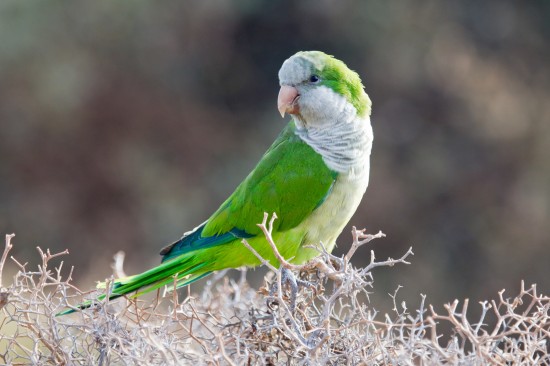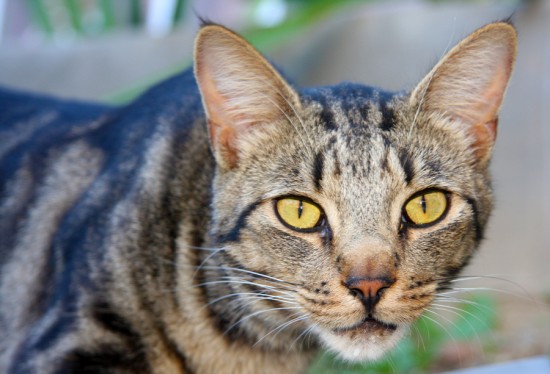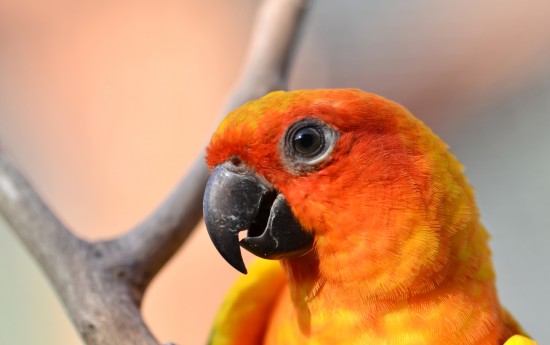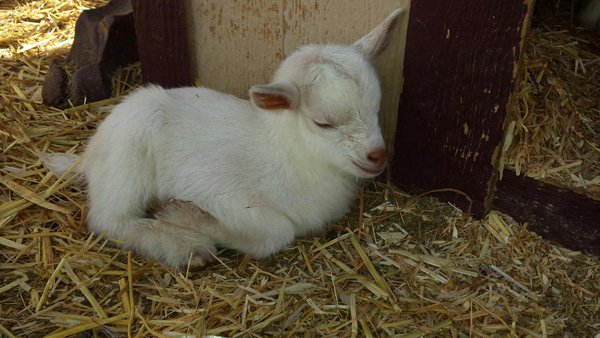

The Quaker Parrot (Myiopsitta monachus) is also known as the Monk Parakeet and is the only species in its branch of the parrot family. It originates from Argentina and surrounding areas, but there are feral populations across North America and Europe.
It is generally around 29cm in length with a 48cm wingspan and weighing around 100g. The females tend to be 10-20% smaller, but this is not reliable enough to sex the birds, which is best done by a DNA test. Most of the upper feathers are a bright green with pale grey breast and face and yellowish-green underparts. The tail is long and tapered with dark blue feathers. In domesticated breeds, variations have been see with white, blue and yellow in place of the bright green.
There are three sub-species in the wild, and they cover an area across Argentina, Paraguay, Uruguay and into Brazil and Bolivia. In many areas of their natural range, they are considered to be a pest due to their choice of food. They have become particularly populous in areas where eucalyptus trees have been introduced for paper pulp production, namely due to little competition from other species.
Feral populations which are successfully breeding have been found in Spain, Gibraltar, Italy, Great Britain and Belgium as well as in Israel, the Bahamas, Bermuda, Puerto Rico and even Japan. Populations in the USA have spread to even colder areas such as New York City, Chicago and Rhode Island but due to their status as pests, are actually illegal to be kept in some states such as California.
Quaker parrots are extremely intelligent and learn to mimic speech, as well as any other parrot. This ability is seeing an increase in them being kept as ‘speaking’ birds in place of parrots such as the cockatiel. They are smaller and live a shorter lifespan than others such as the African Grey, and this adds to their popularity. Average lifespan is 15-30 years.
These are very intelligent birds whose demonstrate a lot of affection. However, as with many parrots, they can be very noisy and demanding. They need time out of their cage and will see a cage as a challenge to escape from. This should be taken into account when picking a cage for one.
A minimum cage for a Quaker should be 18 inches square with plenty of toys and activities for the birds to keep occupied with when in their cage.
As they are flock birds in the wild, they will often view their humans as their flock. They particularly take to one person and are extremely loyal to that person.
Quakers aren’t shy when it comes to food; they love fresh fruit and vegetables as well as seeds and pellets. They can become overweight if too many fatty foods are given, so this needs to be monitored.
Vegetables such as cauliflower, peas, carrots, corn and broccoli are excellent foods for Quakers, as are fruits such as apple, papaya and bananas. Like most birds, they will appreciate greens such as parsley, mustard greens and spinach while also enjoy more ‘human’ foods such as whole wheat breads, whole wheat pasta, cooked chicken and turkey, cooked eggs, cooked brown rice and even cottage cheese. Oats, pine nuts, most beans and even pumpkin seeds are all great foods.
As with any parrot, never feed them avocado, chocolate, alcohol, caffeine or carbonated drinks. Some of these substances are extremely toxic to some birds, so it isn’t worth taking the chance.
The Quaker is the only parrot which builds a stick nest in a tree or even in a man-made structure, as opposed to simply using a tree cavity. They will often build their nests in colonies with each nest having its own entrance and the size of these colonies of nests can reach the size of a small car. They lay between 5-12 eggs which hatch in around 24 days.
These colony nests can attract extra tenants and birds such as the Spot-winged Falconet, ducks such as the Yellow-billed Teal and even small mammals have been seen sharing accommodations.
When raising their young, Quakers often have helper individuals, which is unusual for parrot species. This is usually a younger member of the family, the previous year’s young perhaps, who will help with the feeding of the chicks and fledglings.
In captivity, a bird which has been hand-raised may not take to being a breeding bird. For all breeding is natural, a hand reared bird sees its favourite human as its mate and may not take to another bird. Therefore if you want to breed a pair of Quakers, it is best to obtain breeding birds.
Once a suitable pair has accepted each other, a nest box should be supplied, typically 24x24x48 inches. If the pair live in an aviary, the nest box should be positioned as high as possible to give the birds a feeling of security. Another option is to construct a box of strong wire mesh which will allow the birds to engage in their typical nest building style using twigs and sticks. Most breeders leave the box in place all year around, even when not breeding.
Four to eight eggs are laid, usually at a rate of one every other day. The birds incubate for 26-28 days with the female doing most of the work in the wild, though sometimes both birds in captivity will take turns. They should be left alone when in the nest and checks should be done when the parents are out feeding. If birds are being hand-reared, they are typically removed at around three weeks of age. Otherwise, they will fledge at six to seven weeks old.
These are active and highly intelligent smaller parrots who love people and learn to talk better than most. They bond with their human if they have been hand reared or make good parents if parent-reared. They can be noisy but pairs less so than in flocks. All round, a great addition to the family.
 How do you know if your dog or cat has allergy problem? Here are signs
How do you know if your dog or cat has allergy problem? He
How do you know if your dog or cat has allergy problem? Here are signs
How do you know if your dog or cat has allergy problem? He
 If Dogs Love Swimming, How Come They Hate Being Bathed?
If Dogs Love Swim
If Dogs Love Swimming, How Come They Hate Being Bathed?
If Dogs Love Swim
 Coping With Feral Cats
Coping With Feral
Coping With Feral Cats
Coping With Feral
 Sun Conure
Sun Conure
Sun Conure
Sun Conure
 Know How to Make Dog Care More Fun
Know How to Make Dog Care More Fun
Your pet n
Know How to Make Dog Care More Fun
Know How to Make Dog Care More Fun
Your pet n
Copyright © 2005-2016 Pet Information All Rights Reserved
Contact us: www162date@outlook.com